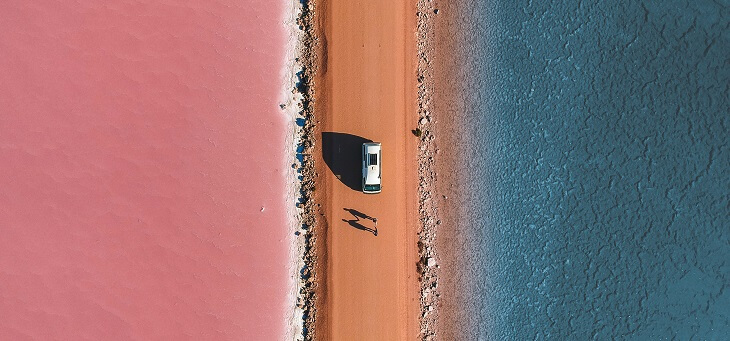Australia is known for its red dirt country and extensive beaches, but head inland and there are hidden lakeside gems, ready for exploring.
Here are some of our favourites.
Lake Eildon, Victoria
Made famous by the Australian classic The Castle, Lake Eildon is a four-hour trip from Melbourne, but you arrive to all the serenity.
All your lakeside entertainments are here, wakeboarding, skiing, boating, kayaking, swimming and houseboating tours.
Read: Australia’s most liveable city revealed
It gets rather busy these days, but the sheer size of it – Lake Eildon holds six times the water of Sydney Harbour – means you can sneak off to a hidden cove if you require a bit of peace and quiet.
And as for that house in Bonnie Doon so very integral to the storyline in The Castle, you can rent it on Airbnb.
Lake Mungo, NSW
This one’s a bit left of centre as Lake Mungo last had water in it several thousand years ago, but don’t let that put you off.
Lake Mungo has some spectacular geometric formations including the ‘Walls of China’ a series of crescent-shaped sand dunes or lunettes, up to 40 metres in height, that stretch for more than 33 kilometres.
It is also home to some of the most important archaeological findings in Australia, including Mungo Man, the oldest human remains found in Australia.
Lake Mungo is about 116km from Mildura along the Arumpo Road, which is an adventure in itself, and the NSW National Parks and Wildlife Service runs day tours or you can base yourself at Mungo Lodge.
Read: Best Aussie food fests to check out
Blue Lake, South Australia
Just like it says in the title, Blue Lake is blue, until it’s not. From November to March it matches its name, but visit at the wrong time of year and it’s a dull grey.
The lake is nestled in the crater of an extinct volcano that supplies the chemical reaction, combined with summer sun speeding up the process, that turns grey into blue every year.
As it provides Mount Gambier’s water supply, you can’t swim in it but there are plenty of tours, a lookout, loads of accommodation in Mount Gambier and if you really need to get wet, 20 minutes out of town is the Little Blue Lake, a popular swimming and diving spot.
Lake Eyre, South Australia
Depending on your tastes, you might have to plan this one way ahead.
Do you like desolate landscapes to rival a Mad Max movie with no end to the landscape in sight? Or are your tastes more inclined to water bodies with thriving water birds as far as the eye can see?
Lake Eyre – now officially known as Kati Thanda-Lake Eyre – only floods occasionally, so for years in a row it’s just a vast salt pan and its remote location means it’s never a day trip, more of a once-in-a-lifetime adventure.
It is Australia’s largest lake when full, covering an estimated 9500 square kilometres, although there are some ‘lakelets’ permanently around the edges.
The lake only fills an estimated one in 160 years, although a 1.5m flood occurs once every three or four years and a 4m flood every decade or so.
It’s only for the dedicated though. The remote location means it’s hardly a side trip on the way to Alice Springs. Visit the South Australia tourist site for more information.
Read: 101 ways to holiday in Australia
Hutt Lagoon, Western Australia
Popular on Instagram, Hutt Lagoon is a big pink blob seemingly dropped into an Australian bush landscape.
It’s hard to believe the colour is natural. It’s due to carotenoid-producing algae, dunaliella salina, which basically means a bunch of tiny bugs make happy and turn the lake pink.
Hutt Lagoon is five hours from Perth, so it’s worth timing your visit for the best bang for your buck.
It is said that the lake is best seen between 10am and 2pm when the sun is at its highest on a cloudless day. Summer can bring out the pink zing, but there may be less water in the lake and in winter when the level is higher, the chance of clouds is also higher. So, who knows?
Visit the Coral Coast tourism website for tips.
If you enjoy our content, don’t keep it to yourself. Share our free eNews with your friends and encourage them to sign up.

